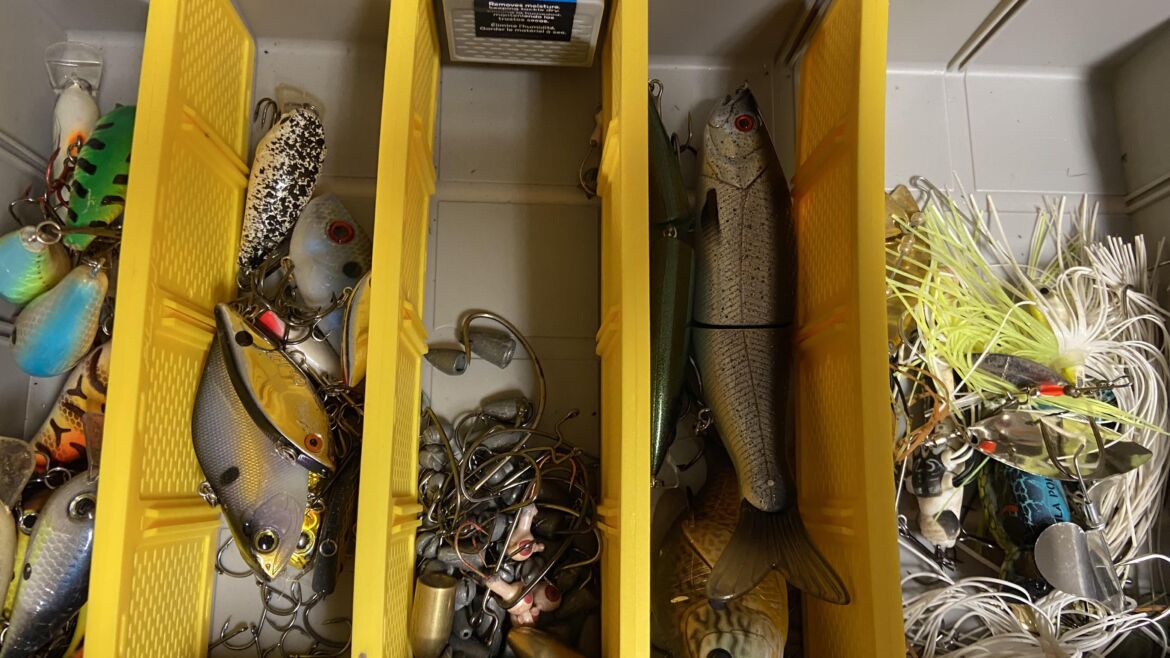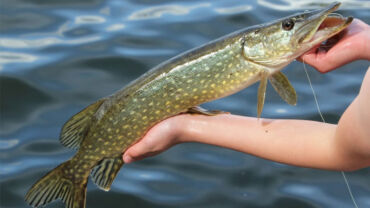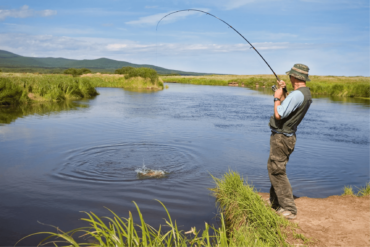For years, freshwater fishing has captured the hearts of many anglers as they look to get out and explore nature. By far and away, freshwater fishing presents the most affordable and accessible fishing options allowing anglers almost everywhere in the country to pick up their rod, go for a quick drive, and in a relatively short amount of time, have a line in the water. Because of the massive population of fishermen that fish the freshwater, there has been tons of demand regarding what are the best lures (artificial baits) to fish with to yield the best results in local ponds, streams, rivers, and lakes. In this article I will be going over 3 main topics:
While fishing random lures at random times can sometimes result in catching fish, there is a far more efficient means of doing so. There is immense importance in choosing the right bait when fishing freshwater—you can’t just play roulette. This is precisely where the Fishbox App comes in. Fishbox takes in scientific data from anglers all over the world to create a database and prediction mechanism that gives anglers insights into the best locations and times for fishing. Fishbox is essentially your own personal, local guide whenever you go fishing, giving you that extra insight needed to land the catch of a lifetime.
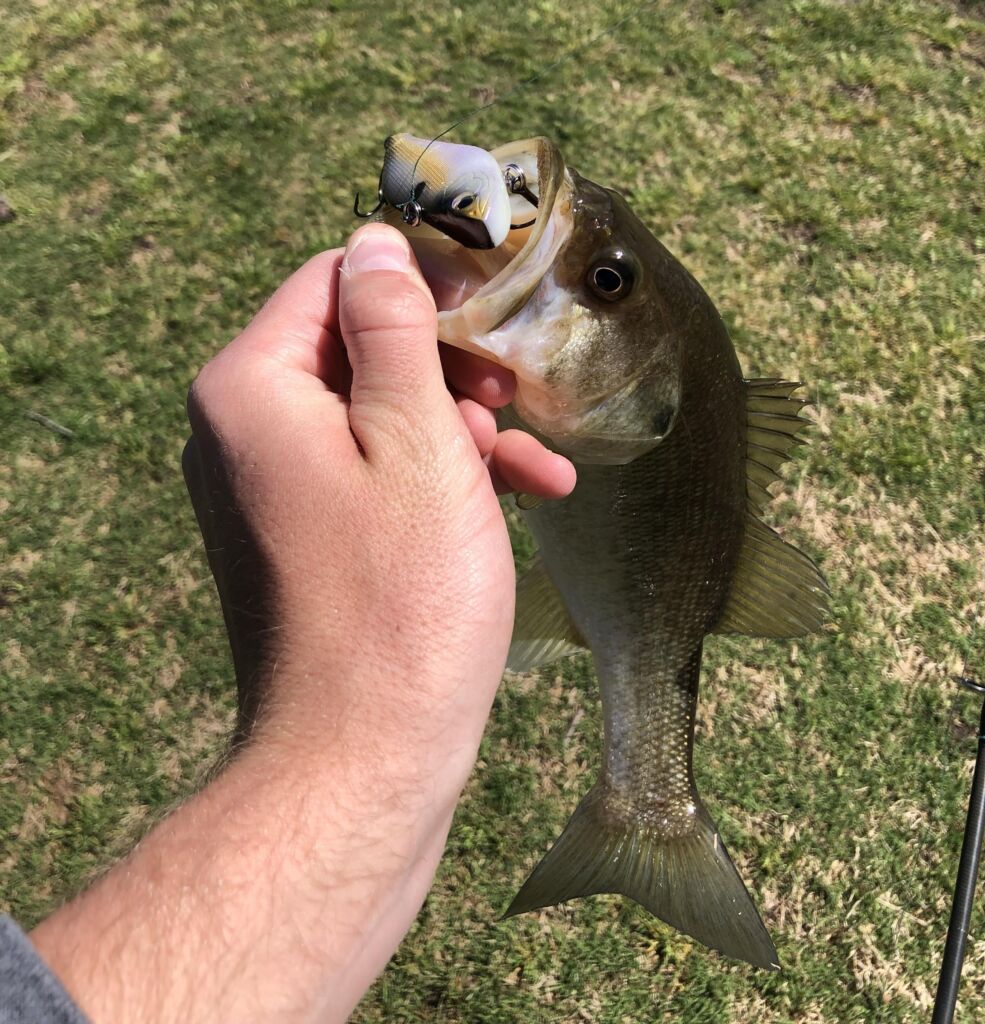
The Best Freshwater Lures Based on Popular Freshwater Species
- Largemouth Bass:
- Crankbaits (March-November).
- Spinnerbaits (Year-round).
- Soft Plastic Worms (May-September).
- Frogs (June-August).
- Swimbaits (October-February).
- Channel Catfish:
- They don’t tend to bite artificial lures.
- Smallmouth Bass:
- Senko (March-May).
- Soft Plastic Crawfish (March-June).
- Spinnerbaits (Year-round).
- Bluegill:
- Rooster Tail (March-November).
- Soft Plastic Grubs (March-November).
- Black Crappie:
- Blade Baits (October-April).
- Jerkbaits (February-March).
- Crankbaits (March-November).
- Blue Catfish:
- They don’t tend to bite artificial lures.
- Rainbow Trout:
- Flies (September-May).
- Rooster Tail (Year-round).
- Red Drum:
- Soft Plastic Paddletails (May-August).
- Spooks (May-August).
- Artificial Shrimp (November-February).
- Walleye:
- Deep Diving Crankbaits (March-May).
- Spinnerbaits with Plastic Trailers (March-June).
Get your personalized fishing map
Answer a quick quiz and get your own personalized fishing map
The Best Techniques to Fish These Baits to Yield the Most Results
Let’s break down the components of these baits even further by going into how to fish each of the freshwater baits listed above. It is just as important to have a healthy knowledge of the applications of your lures as it is to know about the species of the fish. First off, the baits listed above can be divided into (but not limited to) 2 main categories:
- Trolling: Very few of the baits mentioned above should be trolled as it will make fishing unproductive, but a few of these lures are perfect for trolling and can be far more efficient than casting for hours.
- Crankbaits: Troll these between 1.5-4 mph [2.41-6.44 kph] (Stick on the slower side of this range when fishing for walleye and smallmouth and go faster when fishing for largemouth). An important note: the size of the bill on the crankbait will decide the depth it goes bigger the bill the deeper it will dive. Just drop the crankbait back behind the boat between 25-75 feet [7.62-22.86 meters] and let the boat and crankbait do the work for you.
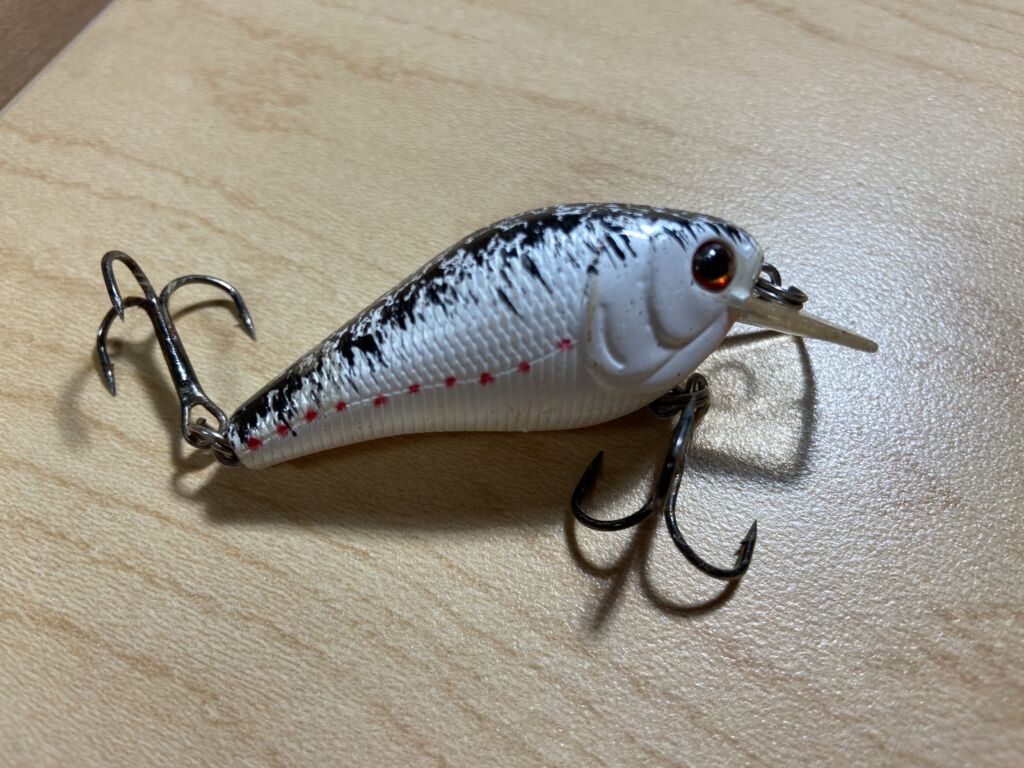
- Spinnerbaits: Troll these exactly how you would with crankbaits. The only difference is spinnerbaits obviously don’t have a bill so they’re not going to sit as low in the water column. To drop the spinnerbait deeper, you can let more line out behind the boat.

- Casting: All the baits above can be cast and here’s how to use them.
- Crankbaits/Spinnerbaits/Roostertails/Deep Diving Crankbaits/Spinnerbaits with Plastic Trailers: I know I listed a lot of baits in one category but hear me out. With every one of these lures, the lure does the work for you. You don’t need to twitch the bait or let it rise and fall. All you must do is simply retrieve the line—sometimes varying the speed of retrieve to mix things up. For the crankbaits and spinnerbaits, you should be casting into deeper water but the roostertail can also be cast into shallow water.
- Soft Plastic Worms/Senko/Soft Plastic Crawfish/Soft Plastic Paddletails/Artificial Shrimp: Once again, these baits listed also should be fished similarly. Whether you fish the soft plastic weighted or not, your goal should be fishing the low middle and bottom of the water column bouncing the fishing lure off cover such as branches, docks, etc. Bounce the bait up a few times, let it fall and repeat. The whole idea with these baits is that you’re looking for cover. Sure, you can fish these in deeper bodies of water, but I’ve found them far more effective when fishing shallower water with more cover.
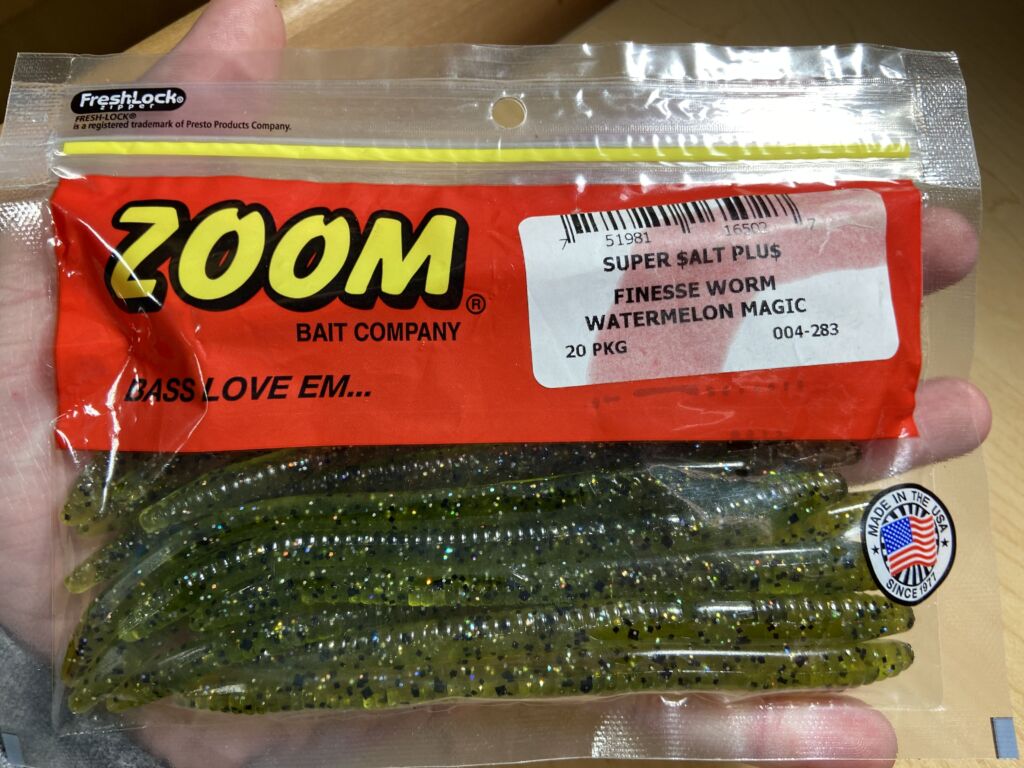
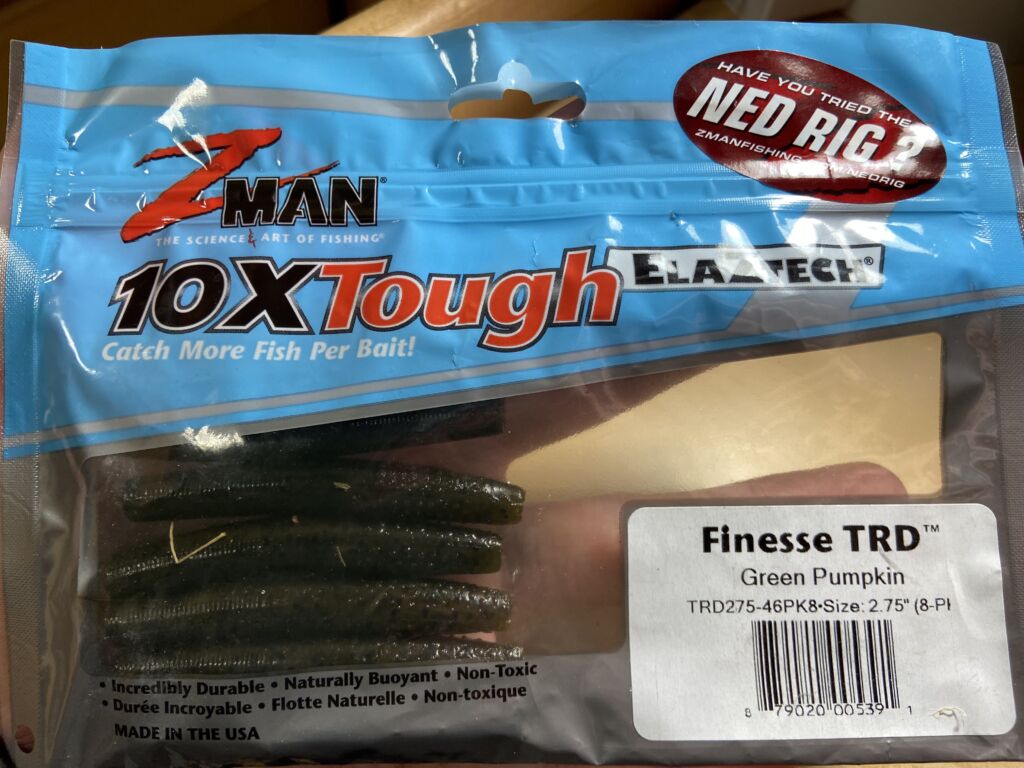
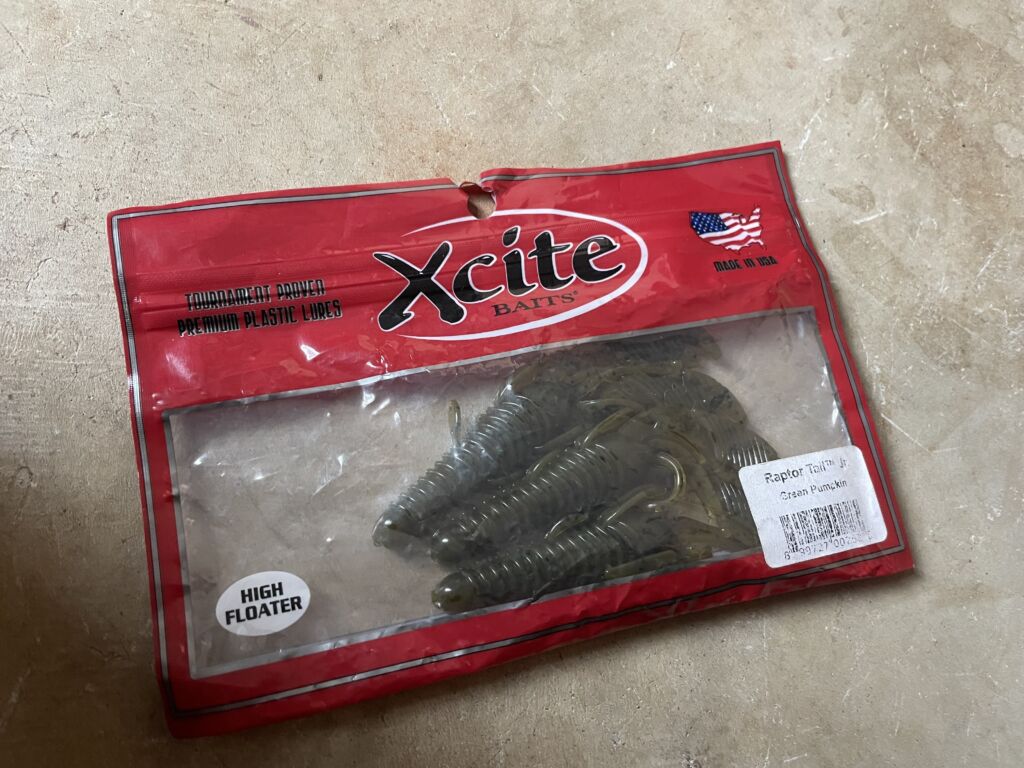

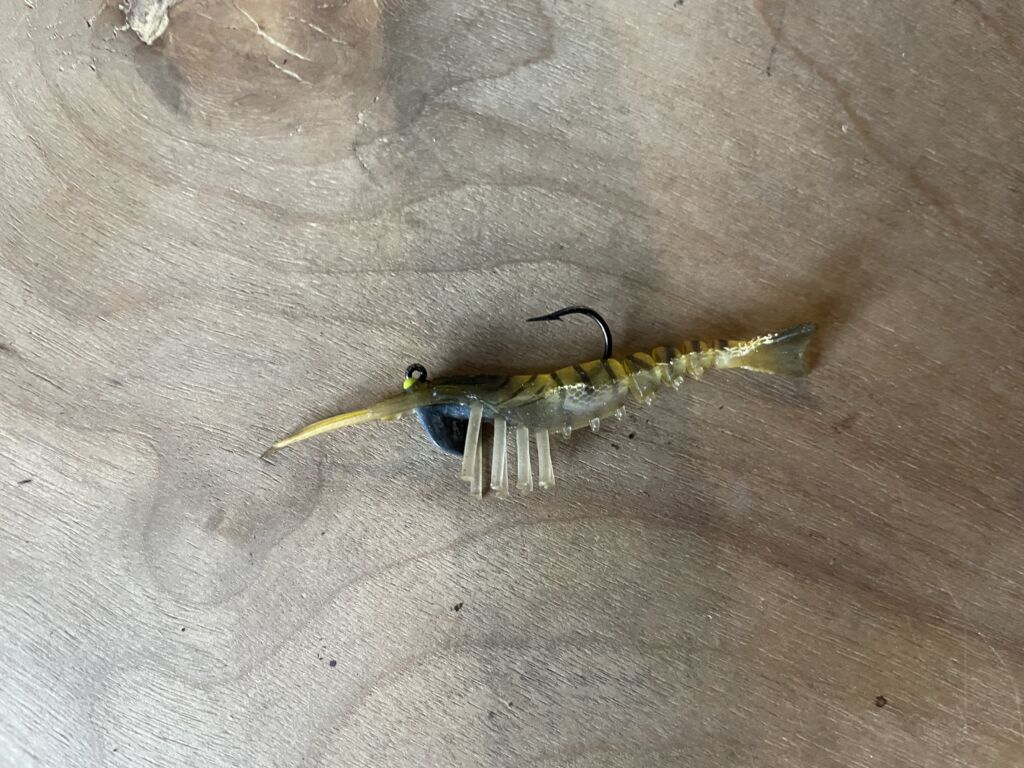
- Frogs: Simple strategy here: fish cover on the top of the water like weeds and lily pads using quick jerk and pause action. At dusk you can try casting out to the middle as the topwater bite also heats up right before nightfall.

- Swimbaits: These are quickly becoming my favorite baits because of how you fish them. For swimbaits, you’re going to need a small amount of water to operate—a bit more than a roostertail. Cast and retrieve, twitching your rod tip side to side to elicit a swimming motion. In my recent experience, this retrieval pattern has been killer at convincing largemouth to strike.
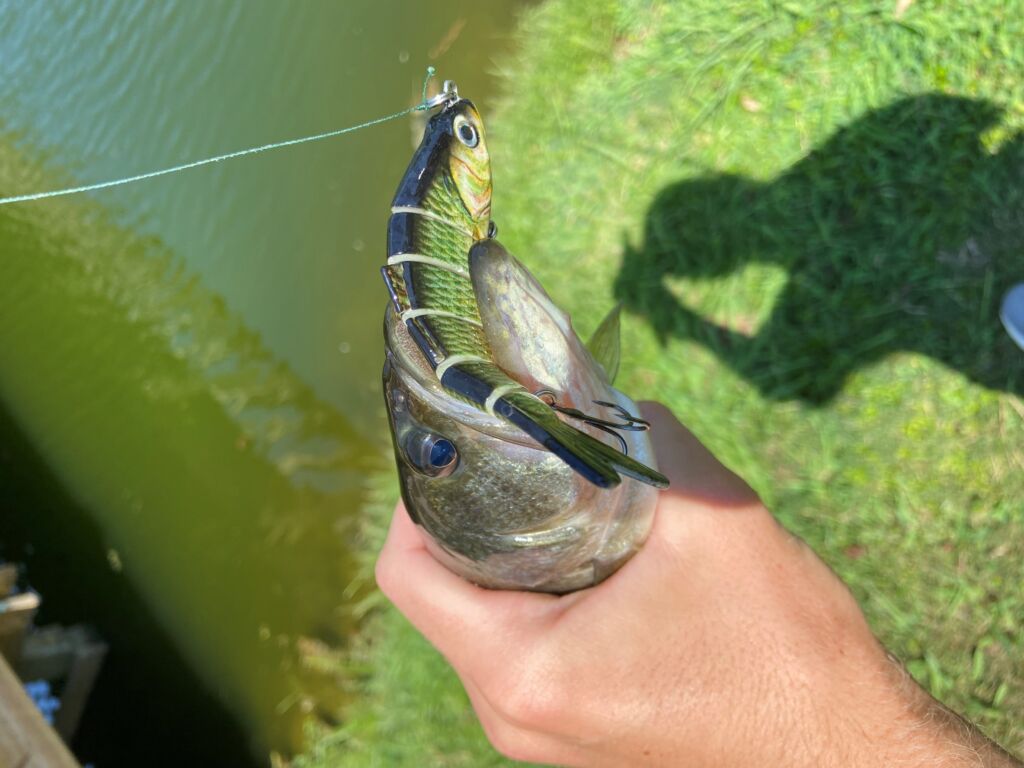
- Soft Plastic Grubs: For these grubs, you’re going to fish these just slightly different from a normal soft plastic. Instead of letting the grub fall all the way to the bottom, try and keep bumping it to keep it somewhere in the middle of the water column—not too close to the surface but also not on the bottom. Vary the retrieve—try some jerky action with the rod tip to bring more life to the grub and you should have no trouble catching panfish.
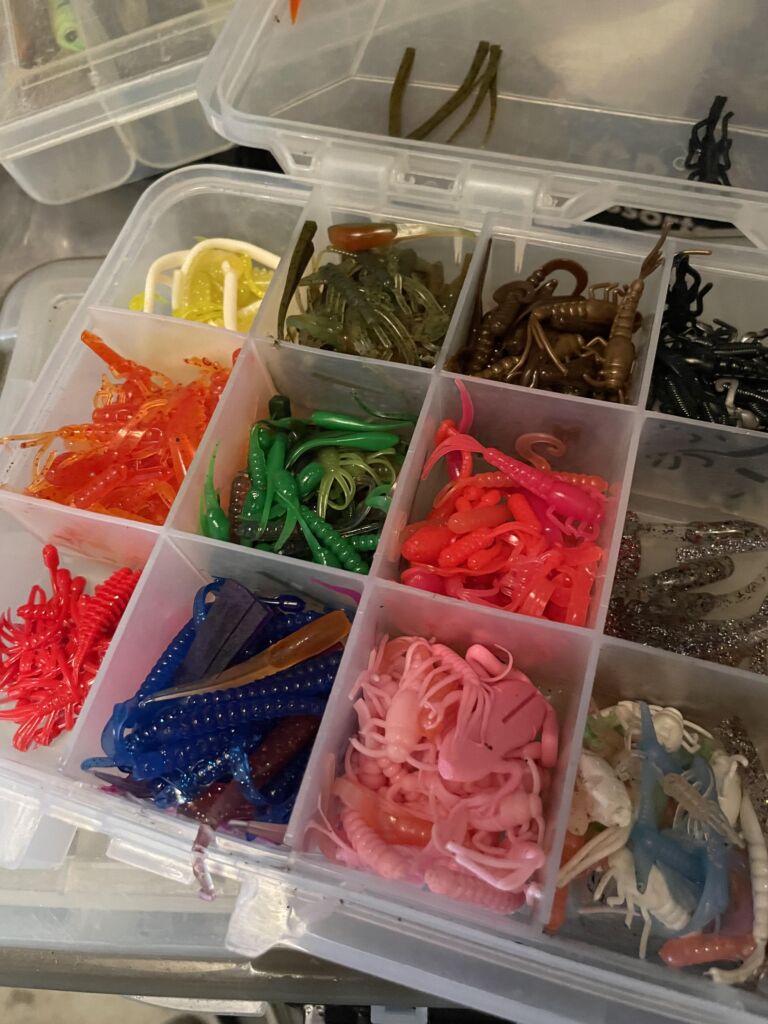
- Blade Baits: Again, this is one of my “go-to’s” when it comes to freshwater bass fishing bait. Cast the blade bait as far as you can into the middle of the body of water you are fishing and let that thing sink. Once it’s on the bottom, pull your rod tip up about three feet, let it fall and then reel in some line. Repeat this process until you get back to the bank. Quick personal tip, the bass will almost always bite on the fall of this bait so don’t get caught off guard when you try to pull the rod tip up in your retrieve cycle.

- Jerkbaits: Throw into deeper parts of the body of water you are fishing. Now while the jerkbait can still work effectively if just straight retrieved like a crankbait, you will find more success while jerking your rod tip on the way back to create side-to-side movement with the bait.

- Flies: Flies are a whole different ball game when it comes to freshwater fishing. In my experience, the best results are found when throwing flies into a moving current that then leads to a deeper pool of water. Oftentimes, trout will sit in these deeper pools under rapids and rise up to strike the fly.
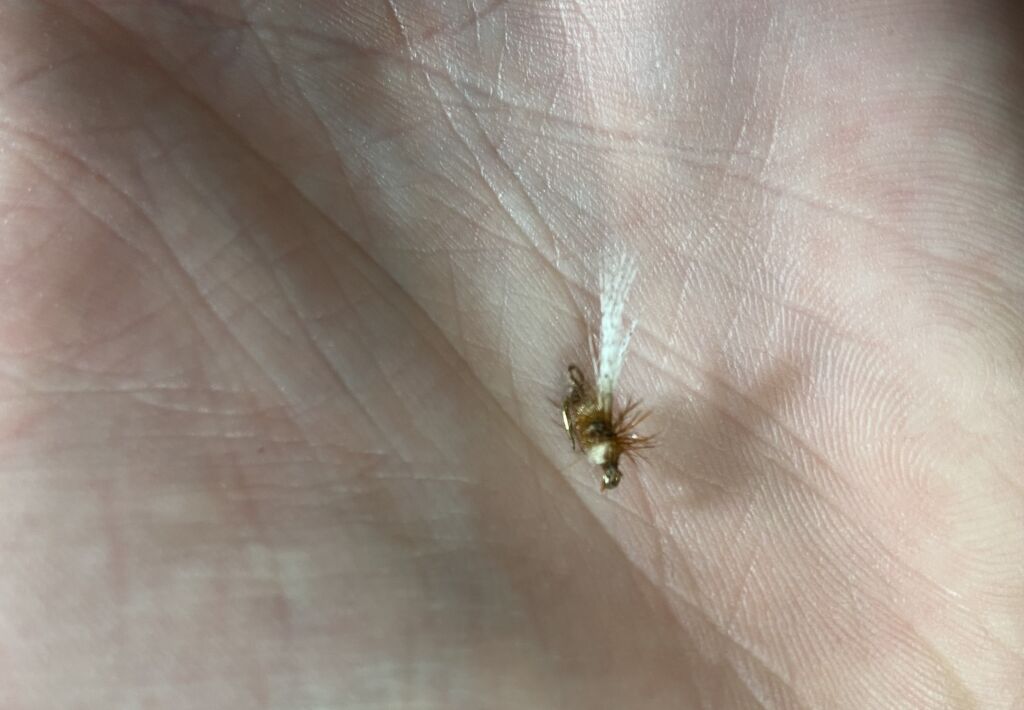
- Spooks: You cannot go wrong with this bait for topwater. Cast it anywhere—the middle or along the bank—it won’t matter. Now it took some time for me to learn how to get this bait to “dance” the way I wanted it to, but now I’ve got it down. Keeping your rod tip low, gently pop the top of your rod to elicit side-to-side action that fish cannot resist. If you can figure out how to get this down, it will be a game-changer.
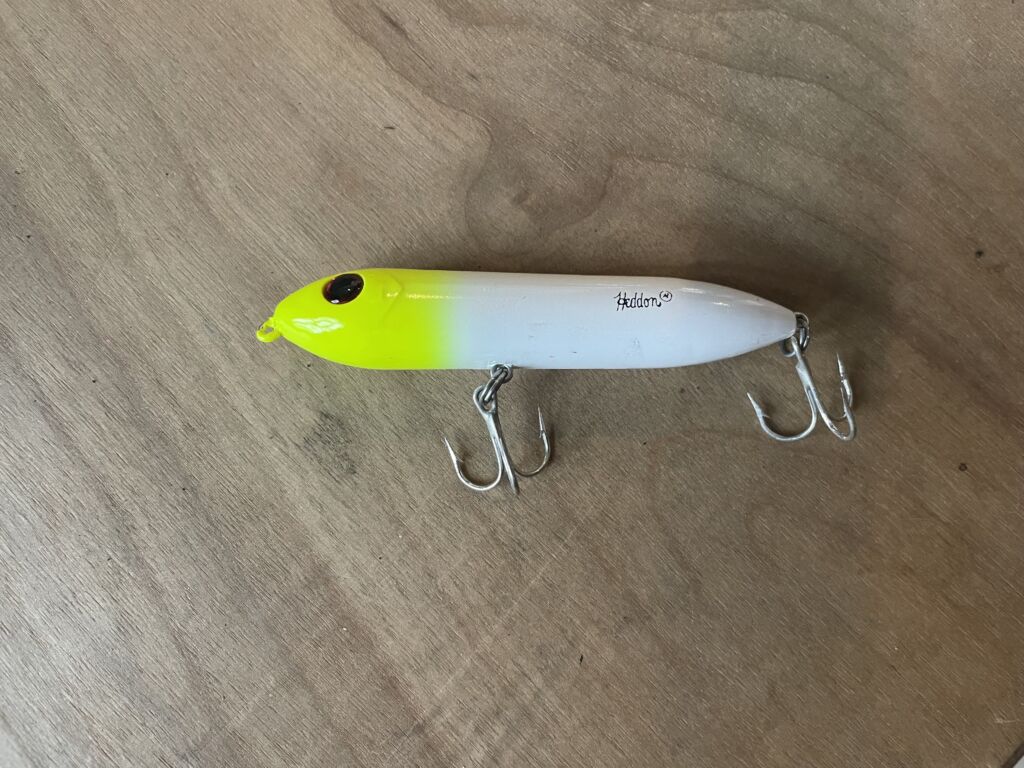
DIY Freshwater Lures: Creativity in Fishing
Contrary to popular belief, making your own fishing lures is relatively inexpensive, fun, and quite useful. Hopefully, I can spark some creativity in you by recounting some of my experience with making my own freshwater fishing lures in three different examples.
- Tying Flies: There is plenty of fly material out there for cheap that you can use. Go get a couple of tying tools, pull up a YouTube tutorial and have a go at it. Trust me, you’re going to be horrible at it at first, but eventually you will get the hang of it. The best part of the whole thing is when you catch a fish on a fly tied by yourself. There’s nothing more rewarding than seeing your hard work produce fish.
- 3D Printing: Though a relatively recent invention, 3D printers can make some pretty cool stuff. There are plenty of 3D template websites with baits already on them. So, if you have access to a 3D printer, I highly encourage you to try printing some of your own baits. This past year I was actually able to print a couple of poppers that I used this summer.
- Carving: By far the most tedious process of making baits, but it definitely has the highest ceiling in terms of the level of bait you can create. One of my good friends is extremely talented at making carved wooden crankbaits that I’ve been lucky enough to use and catch fish on. You can just start with a block of wood and a knife and create any kind of bait you want with a little free time and dedication.
Get your personalized fishing map
Answer a quick quiz and get your own personalized fishing map
I hope these three examples give you helpful insight into just how fun making your own baits can be. Who knows, maybe if it’s raining one day and you don’t have anything else to do, just get a knife and go to town on a piece of wood and try to make something out of it (quick note: I don’t recommend using part of the wood of your bed to do this, it makes Mom mad…don’t worry, I definitely haven’t done this…).
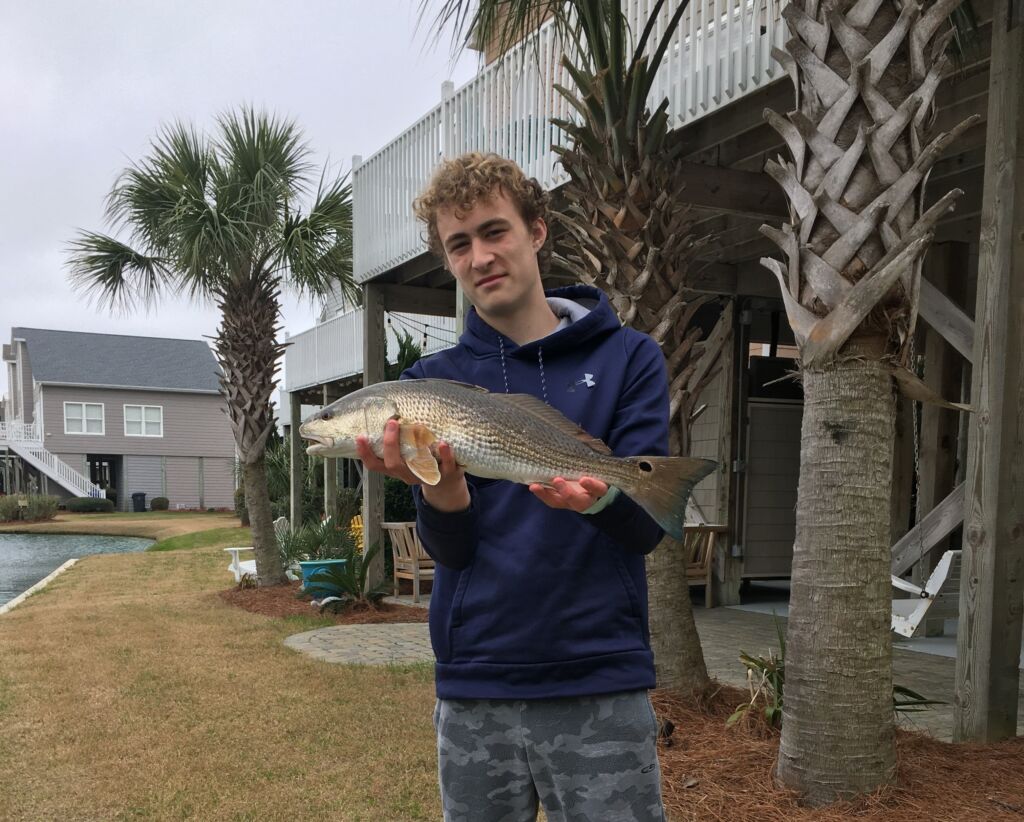
Read also: Best States for Fishing: A Comprehensive Guide for Anglers
Conclusion
As you continue with your fishing career, I hope some of this knowledge from experienced anglers such as myself helps you out. I cannot emphasize enough the importance of knowing your bait, species, and body of water. If you don’t have any clue what kind of bait to use in a situation, you are missing bites before even putting a line in the water. Just think, those days that you didn’t think about what you were throwing could’ve yielded the biggest fish of your life but instead, you stayed in your comfort zone and caught one 6-inch bass. Let this article be your first step in choosing to take a more educated approach to the sport of fishing and see what science can do for your fishing experiences. As always, good luck and tight lines.
Photo Source: All photos in this article were provided by expert Pierce Latta.
Visit his Instagram profile.
Subscribe to his YouTube channel.
